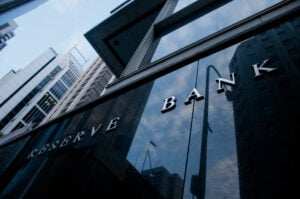(“cross-collateralised securities”, loosely related to the term “all monies mortgages”, basically means that the bank uses multiple or all assets as security in a pool, against multiple or all debt facilities)
Loyalty used to truly mean something in banking. It used to mean that you could get an approval for a deal that the bank wouldn’t do for an unknown client; it meant you could get things done quickly and at a discounted price.
But in the new world, where credit policies are much tighter than they used to be, bankers and credit managers often less flexible, and variances between policies and appetites at each bank can vary materially, there can be some real risks in having everything with just one bank. Even worse, the one bank having every asset as security for every loan or facility.
Why? Here’s a short story of what can happen…
Bob & Mary have built a couple of strong business and a sizeable property portfolio over the years:
- they have plenty of net cash flow;
- the businesses operate from commercial premises that they own (with some debt, but conservative gearing);
- they have other commercial properties leased to third parties as investments;
- they own a beautiful waterfront home on the water worth a couple of million;
- as well as a couple of residential investment properties, occupied by their adult kids.
Life is great, their net asset position is in the millions, they’ve worked hard.
Their accountants and lawyers did the right thing by building a smart corporate structure, for asset protection and taxation purposes:
- the home is in Mary’s name;
- whilst Bob is the Sole Director of the businesses;
- the properties are owned in a Family Trust;
- the businesses operate under separate companies that have the Family Trust as the shareholder.
They’ve loyally been with their bank for the last 20 years… And just to make life easy, the friendly banker over the years made sure that every one of their assets – businesses, commercial and residential properties – were held as security in a cross-collateralised form, for all of their business loans and facilities, commercial property loans, and home loans for investments and their PPR.
This way, whenever they needed some more money, all of the extra equity across all the assets could easily be pooled to provide a new loan. Easy!
Until one day, there’s a legal dispute in one of the businesses. Then the turn of events go like this:
- Operating cash flow goes into the red, as the lawyers’ bills rack up every month fighting the frivolous case.
- Bankers and Credit Managers don’t like legal disputes, so when Bob asks for an increase to their line of credit to pay the bills, the bank declines.
- Bob is forced into an ATO payment arrangement, which triggers a default with the bank.
- The banker is then forced to send the file to the bank’s “hospital division” (or “bad bank” as some like to call it!), where the bank’s attitude suddenly changes to “you need to fix this problem now, or we want out”.
- Without an obvious or palatable solution at hand, things drag out for a few months, further infuriating the bank.
- Bob & Mary make the difficult decision to sell a couple of the commercial properties, which have plenty of equity in them, to free up cash flow so that they can continue to fight the legal battle. The property is put on the market, a contract is quickly achieved, which is then sent to the bank so that settlement can be completed.
- Except that, using its cross-collateralised security position and deciding that it “wants out”, the bank – wholly within its rights – decides to take 100% of the sale proceeds to reduce the bank’s facilities, reducing the facilities it wants to payout, irrespective of any tax effects, leaving Bob & Mary with no cash to fund further legal costs, and no cash for the CGT on the property sale.
- With all of the stress, the performance of the businesses has been waning, cash flow getting worse and worse. The bank then decides to step in, appointing Receivers.
- All of the assets are sold by the Receivers – the businesses and properties, including the family home – naturally at a heavy discount to market value because of the distressed position, and net of the Receivers’ hefty fees. Leaving Bob & Mary wiped out.
This story may sound extreme, but it has and does happen – I’ve seen it more than once.
The Asset Protection Strategy was all for Nothing
All of the asset protection and efficient tax structures that were setup by the accountants and lawyers, were completely destroyed by the client giving all of their assets as security to one bank.
If just one of those commercial properties were held by another bank, in a different entity/trust to the other assets, Bob & Mary could have dealt with each asset in isolation, choosing what to do with the equity in each; furthermore, the Receivers might not have been able to act upon all entities, if sufficiently separated.
Now unfortunately, not everyone in every situation can be in a position to separate every asset between different banks. Sometimes it just isn’t practical, sometimes a cross-collateralised security position is the only way to get a deal across the line with a bank. But at very least, these very real and possible risks should be considered.
Working out how to best protect a client’s position through structuring debt and security positions, together with the structures setup by the accountants and lawyers, is very much part of the professional “more than a finance broker” mentality that we undertake here at STAC Capital.
Get in touch to discuss how to manage risks, whether for you or your clients, if this story rings any alarm bells for you.
– Mark Trayner



